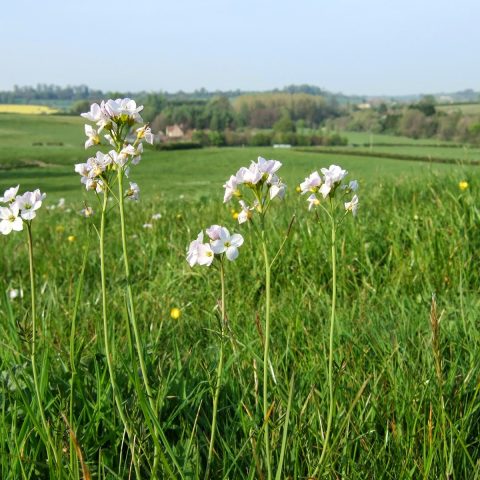Ugie Peatland Partnership's story
A lowland raised bog of roughly 50 hectares, Moss of Kinmundy is one of the peatland areas in the River Ugie catchment, located in Aberdeenshire, that has experienced significant environmental degradation over time. This deterioration is attributable to historical human-led activities in the ecosystem that dried up the peat soil, including drainage, forestry and peat extraction work. As a result of the soil drying up, the peatlands are turning from a carbon sink (e.g. carbon-storing land) to a carbon source (e.g. carbon-emitting land), leading to more greenhouse emissions.
In the specific case of Moss Kinmundy, concerns also mounted over peat soil erosion and the release of organic material and discoloured water from the raised bog, which threatened drinking water supplies in the North-Eastern Scottish locality. The degradation of the area has also had impacts on local biodiversity: the habitats of fauna located in the ecosystem were adversely affected, in particular those of migratory birds and in-decline butterfly species.
Looking to address these challenges, the Ugie Peatland Partnership was established with the objective of restoring 20 selected priority areas in need of restoration in the River Ugie catchment's wetland ecosystem. The multi-stakeholder partnership is composed of Scottish Natural Heritage, RSPB Scotland, Aberdeenshire Council, IUCN Peatland Programme, SEPA, Forestry & Land Scotland, Peatland ACTION, and Scottish Water. The diversity of the partners highlights the multiple benefits of this endeavour for flora, for wildlife, and for local communities in Aberdeenshire.
The planned restoration work in Moss Kinmundy took place in 2019, funded by Scottish Water and NatureScot's Peatland ACTION fund, and managed by RSBP Scotland on behalf of the landowner. The restoration work centred around the need to increase water quantity in the peatland. To this end, peats and plastic dams were used to block 700 metres of ditches in the area. Moreover, in peat banks, the land was re-shaped and re-vegetated, accompanied by the removal of slow-growing trees and the subsequent smoothing of the peat ground.
Five weeks after this restoration work had been carried out, some results were already visible: as the blocked ditches raised water into the bog's surface, small pools had formed across the restored land. With more water in the wetland ecosystem, Sphagnum mosses can emerge, a species key to the formation of peat. This long-term goal was also supported by the removal of stunted trees, which helped to prevent further drying in the peatland.
At present, Moss of Kinmundy is on the road to recovery. The main benefits of the restoration of the raised bog include carbon sequestration, improved water quality, wildlife habitat restoration, flood management, a reversal of biodiversity loss, and better access to the area.
Useful learnings from Ugie Peatland Partnership
Multi-stakeholder partnerships are valuable for peatland restoration projects given the multiple benefits, expertise, and resources that each partner can provide.
Drones are useful to survey pre-restoration areas and monitor results in post-restoration land.
Nature-based solutions and working with nature should actively consider wildlife populations and overall biodiversity in the area.
Ugie Peatland Partnership's metrics
Amount of water raised to the bog's surface.
Rate of growth and overall health of trees next to the peatland.
Observable emergence of Sphagnum mosses.
Over the long term, the observable formation of peat.






